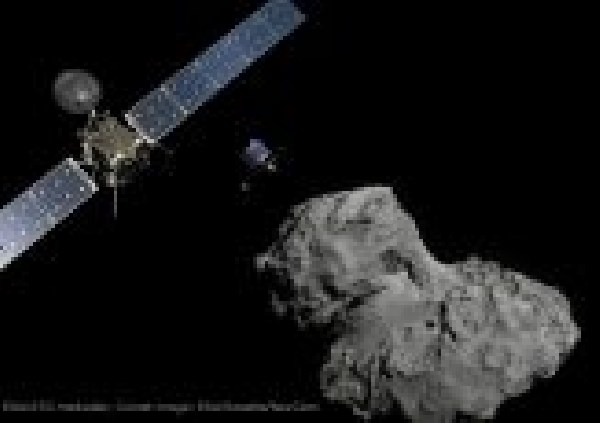Rosetta, the European Space Agency’s (ESA) cornerstone mission, will come to an end today through a controlled descent to the surface of comet 67P/Churyumov-Gerasimenko. Rosetta’s unique and final moments will be captured by e2v’s high performance image sensors, which have been aboard the spacecraft for over a decade.
Launched in 2004, the spacecraft captured the world’s imagination when the Philae probe made a historic landing on comet 67P in 2014. e2v’s high performance image sensors have helped to guide the spacecraft and send back spectacular, high resolution images of the comet. Due to Rosetta’s ever increasing distance from the Earth and the Sun (over 850 million km), there is no longer enough solar power to operate the spacecraft and download scientific data, so Rosetta will follow its lander Philae down onto the comet. This is where its journey will end, with e2v’s sensors capturing very high resolution images of its final descent.
The images and data collected as part of Rosetta’s final movements will greatly boost its science return by providing scientists with a better understanding of how life on Earth began. Although today marks the end of the spacecraft’s operations, it is also the beginning of a new wave of scientific analysis, which is only possible through such a unique conclusion.
e2v’s Group CEO, Steve Blair, said, “I’m delighted that we have contributed to this historic ESA space mission of ‘firsts’; the first European spacecraft to pass through the main asteroid belt, the first to fly close to Jupiter’s orbit using solar cells as its power source, and the first to rendezvous with a comet and obtain images. Our sensors have enabled a unique understanding of how a frozen comet is transformed by the warmth of the sun, furthering discoveries about the early solar system.”
e2v has a long heritage in providing imaging technology for over 150 space missions, including the upgrade of the Hubble space telescope, the Mars Curiosity Rover, Gaia and Kepler.



















